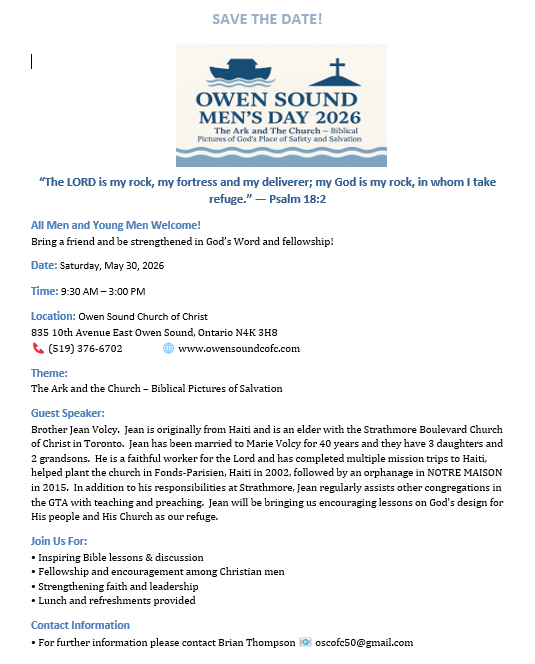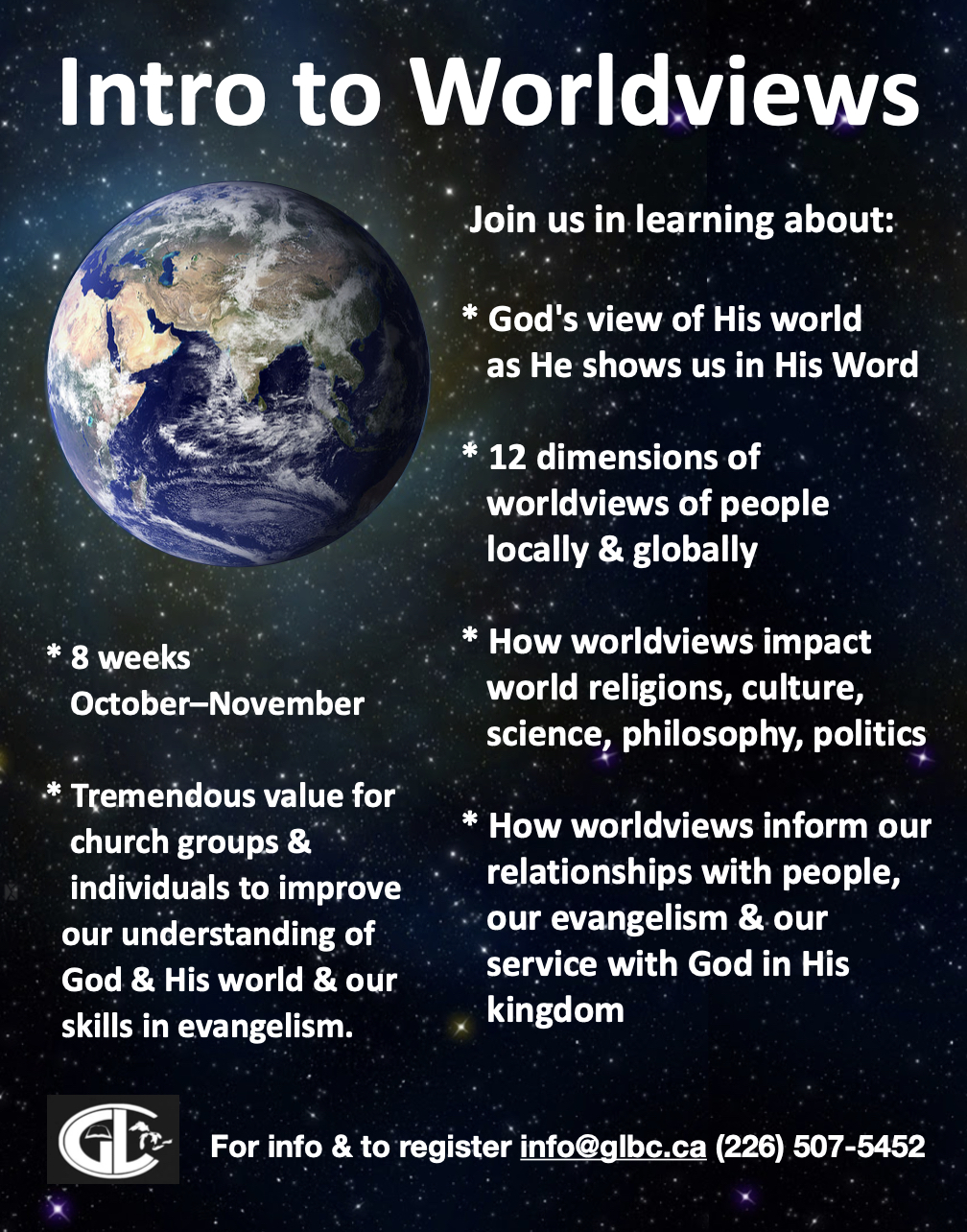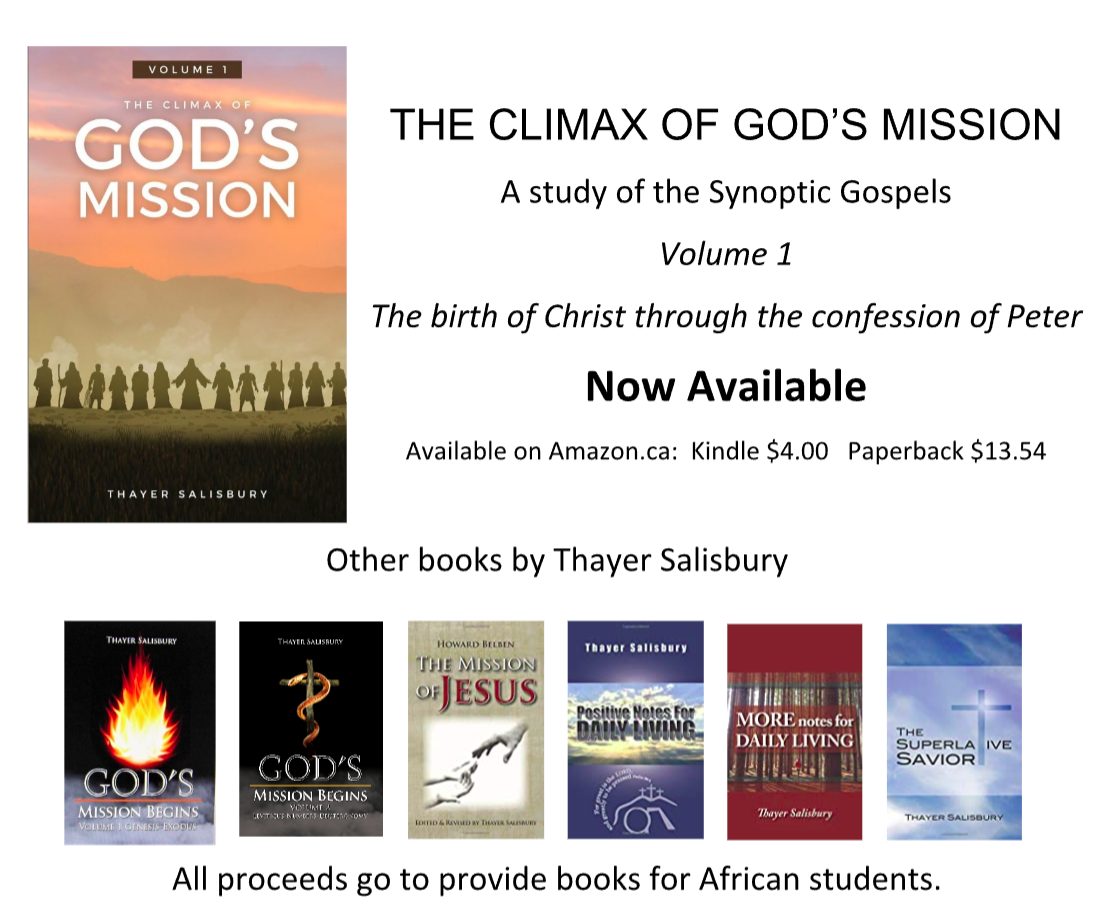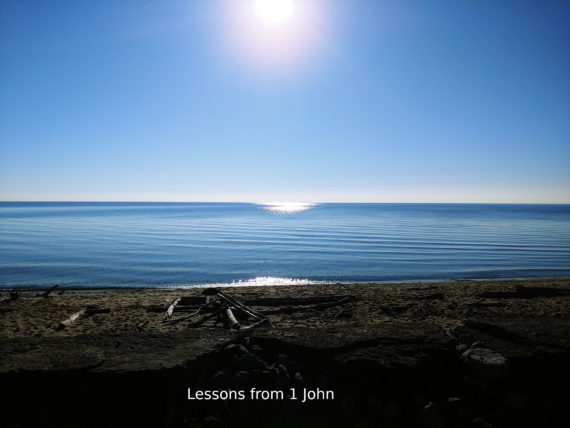I John: 3:1-3:10
This article is the fourth in a ten-part series drawn from the book of 1 John. The first three appeared in earlier issues of the Gospel Herald during 2025. These articles are adapted from Bible class lessons and revised for publication, each focusing on a specific section of John’s letter. By the series’ end, we will have covered the entire book.
I John: Summary So Far









Late in the first century, John is writing to Christians in every place, addressing a growing movement called Gnosticism. This philosophy taught, amongst other things, that Spirit was inherently good and Matter (including human bodies) was inherently evil—and never could the two interact in a positive way. Salvation, in the Gnostic view, involved freeing one’s good inner spirit from the prison of the evil body.
One of the key elements of Gnosticism that contradicted the core of Christianity was the claim that Jesus could not have been God in the flesh—because God, being Spirit, could not inhabit a human body, which was Matter. John insists otherwise. Jesus did come as God in the flesh, and the message the apostles preached was both true and complete—nothing needed to be added or taken away.
While John clearly writes to counter this heresy, we don’t need to be experts on Gnosticism to benefit from his message. John’s rebuttal is to return to the foundational Gospel—a strategy worth emulating whenever we find ourselves questioning our salvation or the teachings we hear. It’s also the heart of the Restoration Movement, of which we’re a part.
Summary of 1:1–2:29
- What we do in the body matters, both now and in eternity—and all of us have sinned and need forgiveness.
- We have salvation—the forgiveness of sins when we confess our sins.
- Jesus is our advocate when we do sin, but we are to strive to walk in the light—meaning to learn God’s will and follow it.
- Jesus is the redeemer who purchases us for God, the sacrifice who appeases God’s wrath, and the source of salvation—for us and for the whole world.
- All Christians, regardless of maturity level, are fully saved: knowing the Father and having Him abide in them.
Let’s take encouragement from the early church and the persecutions they endured and overcame.
1 John 3:1–10
John opens this section with astonishment and awe: “See what great love the Father has lavished on us, that we should be called children of God! And that is what we are!” (v.1). This love isn’t theoretical or abstract. It is real, active, and transformative. God not only calls us His children—He makes us His children. We are not mere followers or students; we are family.
This truth is so staggering, John doubles down: “And that is what we are!” It’s as if he can hardly believe it himself. Yet it’s true. This divine identity, however, isn’t always recognized by the world. John explains why: the world doesn’t recognize God, so it doesn’t recognize His children either.
There is both encouragement and warning here. When the world marginalizes, misunderstands, or even persecutes believers, John reminds us that this is not new. It happened to Jesus. It happens to those who follow him. Our value is not determined by how the world sees us, but by how God sees us.
John then speaks of our future. “We know that when Christ appears, we shall be like him, for we shall see him as he is” (v.2). There is mystery here—we don’t yet fully grasp what we will become. But one thing is clear: our destiny is transformation. When Christ returns, we will be made like Him. This echoes Paul’s words in Philippians 3:21, that Christ “will transform our lowly bodies so that they will be like his glorious body.”
This hope leads somewhere practical: “All who have this hope in him purify themselves, just as he is pure” (v.3). Our identity and future compel us to live differently now. We pursue holiness not to earn God’s love but because we already have it. We are becoming what we already are.
The more we appreciate our status as God’s children and our future destiny with Christ, the more we will want to live in a way that is consistent with that identity. There is a connection between hope and holiness. The clearer our vision of Christ, the more we will desire to be like Him.
John then shifts to a stark warning about sin: “Everyone who sins breaks the law; in fact, sin is lawlessness” (v.4). He wants his readers to grasp the seriousness of sin. It is not a harmless mistake; it is rebellion against God’s order. Sin is not just an act; it is a posture of the heart—a refusal to acknowledge God’s authority.
John quickly reminds us why Jesus came: “He appeared so that he might take away our sins. And in him is no sin” (v.5). Jesus didn’t just die to forgive our sins; He came to deal with sin comprehensively. To take it away. To destroy its power.
What follows can be troubling: “No one who lives in him keeps on sinning… No one who is born of God will continue to sin” (vv.6, 9). Is John saying that Christians never sin? Not quite. Earlier in his letter, he acknowledges that believers do sin and need forgiveness (1:8–9). The key is the word “continue.” John is talking about habitual, unrepentant sin—a lifestyle at odds with God’s nature.
The phrase “keep on sinning” (NIV) or “practices sin” (NASB) in verse 9 reflects the Greek present tense, which indicates ongoing action. John is not describing a single act, but a settled way of life. He is addressing those who are comfortable in sin and who make no effort to resist it.
To be a child of God is to reflect God’s character. Just as a child often resembles a parent, so we begin to resemble our Father. John uses family language to draw a sharp contrast: those who do what is right show they are God’s children; those who do not are aligning themselves with the devil (v.10).
This isn’t about moral perfection. It’s about moral direction. Are we walking in the light or in the dark? Are we striving to obey, even when we fall short, or are we content to sin without repentance?
The final verse of this passage gives us a concrete test: “Anyone who does not do what is right is not God’s child, nor is anyone who does not love their brother and sister” (v.10). Righteousness and love go hand in hand. If we claim to belong to God but are indifferent to others, we deceive ourselves.
In the end, John calls us to examine both our identity and our actions. Are we living as children of God? Are we growing into the likeness of Christ? These are not abstract questions—they shape our daily lives.
Becoming like Jesus is a lifelong journey. It involves struggle, grace, and transformation. But we walk it with confidence, knowing that we are already loved, already claimed, already children of God.
Kitchener, Ontario

